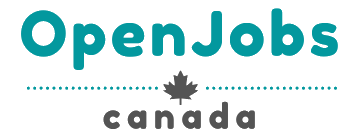
Home » OpenJobs Magazine » Preparing a CV? Here Are 8 Tips that Can Help You
If you are looking to land a Canadian job successfully, be aware that you need to format your resume as a Canadian Resume: according to Canadian recruiters’ familiarity. Canadian employers/recruiters look for specific items in a Resume. On the other hand, there are things that you should not put in it.
Additionally, you must create a resume, not a CV. The resume is the most widely accepted document in the U.S. and Canada, while the CV is for Europe, Africa, India, and most Asian countries. A CV is more comprehensive, usually more than two pages, and can include numerous publications and research, marital status, salary, images, and references: while a resume is usually one or two pages long only.
Below are tips on how to format your Canadian resume and what are the things that you should include in it.
Table of Contents
Tip 1: Use the Reverse chronological format Canadian Resume
The traditional reverse-chronological resume is the commonly used format that Canadian employers and hiring personnel are familiar with. It is the best format to use if you want to land a job in Canada.
- Resume header with your basic information
- A personal summary
- Your professional experience
- Education and professional qualifications
- Skills
Tip 2: Do not write the words RESUME or CV on top of your resume or Resume Header
You should only have your name and contact details such as phone numbers, email address, etc., at the topmost of your resume; do not put the word CV or RESUME. No need to put your physical address either.
Tip 3: Include a Paragraph or two as your Personal Summary
It is where you make a great impression, so you should highlight here your achievements, relevant experiences, training, and skills. Make it concise and impressive, and limit it to a paragraph or two.
Tip 4: Include your Professional Experience: your resume's highlight
Include a summary of your professional or work experiences, with your most recent position first. You should provide the following information for every previous role: Company Name- City/Country (where you were based); your job title that exactly matches the actual position you had; your dates of employment in that role (month and year will do); details of your previous role (mention your achievements!). Ensure to match all your information here to the job you are applying for.
Tip 5: Include Your Education and Professional Qualifications
You should include a section where you should showcase all of your educational attainments, the training you attended, and all short courses relevant to the position you are applying for. It should include the institution’s name and the dates you took them.
Tip 6: Include All Your HARD and SOFT Skills
Put emphasis on your relevant technical skills. Again, ensure that these technical skills you listed are relevant to the job you are applying for. You should also mention your soft skills, such as communication skills, people skills, and problem-solving skills.
Tip 7: DO NOT include your photo in a Canadian Resume
Putting a photo on your Canadian resume is discouraged; it may set you up for possible discrimination. Canadian employers/recruiters do not want to see a picture in your Canadian resume.
Tip 8: Just put in your NAME and CONTACT DETAILS
DO NOT include other personal information such as date of birth, age, marital status, religion, social insurance number (SIN), political affiliation, or immigration status. It could cause rejection of your Resume by Canadian employers to avoid discrimination concerns. Just put in your Full Name and contact details, such as phone numbers and emails.
There you go! Now that you already have a guide on how to write a Canadian resume, it’s time to prepare one. If you already have prepared one, you may want to revise it now. Stick to the Canadian format resume and land a job in Canada successfully!
Share this article:
